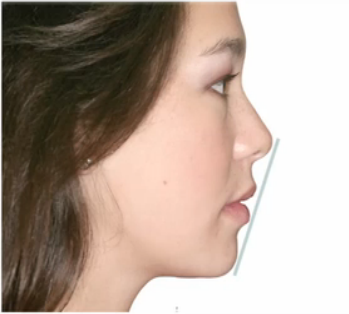Facial Proportion and Profile

A single plan that creates a beautiful smile for everyone simply does not exist.
When treating patients for esthetics, you have to individualize your treatment plan so it caters to your patient’s face. Taking into account facial proportion and profile will help you design the teeth to enhance their existing contribution to esthetics. When a patient requests a change in esthetics, it’s helpful to discuss where proportion and profile affect the plan, treatment, and the final result. If your patient requests to have a fuller smile, there are certain things to take into account when helping them achieve the look they desire:
- Tooth display. Taking specific pictures can guide you in the right direction when evaluating your treatment options. One picture to take is of the patient’s mouth in repose to get an idea of how much tooth display there is when they rest their mouth. This picture can also help determine if there are any inconsistencies such as tooth length or uneven teeth. The second picture to take is of the patient’s full smile. Evaluating the patient’s smile will help you assess not only tooth display but also gingival levels and lip symmetry.
- Facial proportion. Using the evaluative characteristics of your patient’s face, such as midface and lower-face proportions, can help you make treatment planning decisions. These proportions may need to be altered with the help of specialists.
- Facial profile. Using an esthetic plane will provide information on the patient’s profile by determining whether it’s more convex, concave or in the “ideal range.” An ideal esthetic quote would have the upper lip 4 mm behind the plane line and the bottom lip 2 mm behind.
Following these steps in the beginning of your assessment will allow you to create the best treatment plan possible, whether it’s through restorative dentistry, orthodontics, or surgery.
SPEAR campus
Hands-On Learning in Spear Workshops
With enhanced safety and sterilization measures in place, the Spear Campus is now reopened for hands-on clinical CE workshops. As you consider a trip to Scottsdale, please visit our campus page for more details, including information on instructors, CE curricula and dates that will work for your schedule.

By: Mark Fleming
Date: August 20, 2012
Featured Digest articles
Insights and advice from Spear Faculty and industry experts


